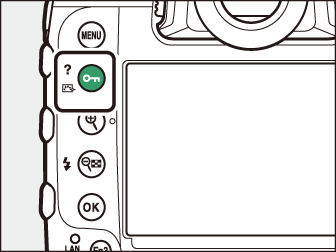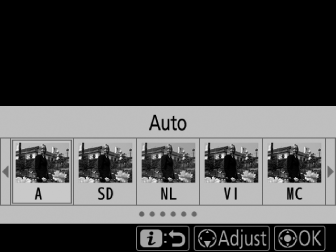Image Processing (Picture Controls)
Picture Controls
Adjust image processing (Picture Control) settings according to your subject or creative intent.
|
Option |
Description |
|
|---|---|---|
|
n |
[] |
The camera automatically adjusts hues and tones based on the [] Picture Control.
|
|
Q |
[] |
Standard processing for balanced results. Recommended for most situations. |
|
R |
[] |
Minimal processing for natural results. Choose for photographs that will later be processed or retouched. |
|
S |
[] |
Pictures are enhanced for a vivid, photoprint effect. Choose for photographs that emphasize primary colors. |
|
T |
[] |
Take monochrome photographs. |
|
o |
[] |
Smooth complexions for natural-looking portraits. |
|
p |
[] |
Shoot vibrant landscapes and cityscapes. |
|
q |
[] |
Details are preserved over a wide tone range, from highlights to shadows. Choose for photographs that will later be extensively processed or retouched. |
|
l01-l20 |
Creative Picture Control |
Creative Picture Controls offer unique combinations of hue, tone, saturation, and other settings tuned for particular effects. Choose from a total of 20 options, including [] and []. |
Choosing a Picture Control
Pressing the g (h/Q) button displays the Picture Control list. Highlight an option using 4 or 2 and press J to select.
|
|
|
-
The Picture Control used for movies can be selected by pressing the g (h/Q) button during filming.
The [] item in the movie shooting menu also offers a [] option that sets the Picture Control for movies to the same as that used for photographs.
Modifying Picture Controls from the Menus
Picture Controls can be adapted to suit the scene or the photographer’s creative intent. Picture Controls can also be edited using the g (h/Q) button. For more information, see “The g (h/Q) Button” ( The g (h/Q) Button ) in “Camera Controls”.
-
Select a Picture Control.
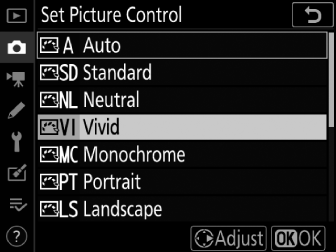
Highlight the desired Picture Control in the Picture Control list and press 2.
-
Adjust settings.
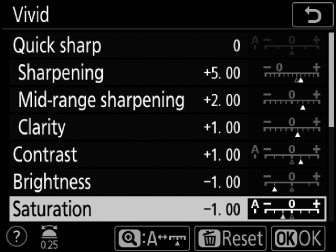
-
Press 1 or 3 to highlight settings. Press 4 or 2 to choose a value in increments of 1, or rotate the sub-command dial to choose a value in increments of 0.25.
-
The options available vary with the Picture Control selected.
-
To quickly adjust levels for balanced [], [], and [], highlight [] and press 4 or 2.
-
Default settings can be restored by pressing the O (Q) button.
-
-
Save changes and exit.
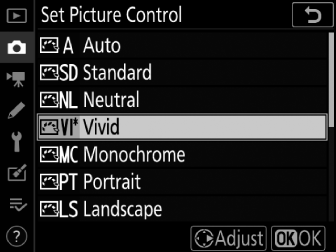
Press J to save changes. Picture Controls that have been modified from default settings are indicated by an asterisk (“U”).
Custom Picture Controls
Save modified Picture Controls as custom Picture Controls.
|
Option |
Description |
|---|---|
|
[] |
Create a new custom Picture Control based on an existing preset or custom Picture Control, or edit existing custom Picture Controls. |
|
[] |
Rename custom Picture Controls. |
|
[] |
Delete custom Picture Controls. |
|
[] |
Copy custom Picture Controls to and from the memory card. |
Creating Custom Picture Controls
-
Highlight [] in the photo or movie shooting menu and press 2.
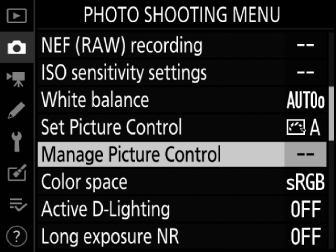
-
Select [].
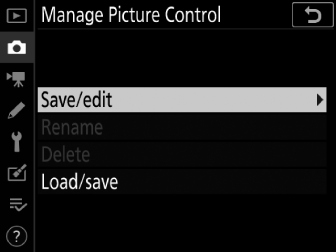
Highlight [] and press 2 to view [] options.
-
Select a Picture Control.
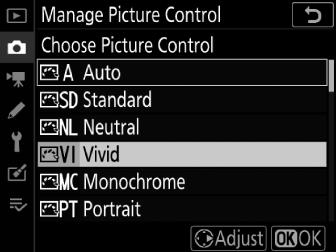
-
Highlight an existing Picture Control and press 2.
-
To save a copy of the highlighted Picture Control without further modification, press J. [] options will be displayed; proceed to Step 5.
-
-
Adjust settings.
-
The options and procedure are the same as for [].
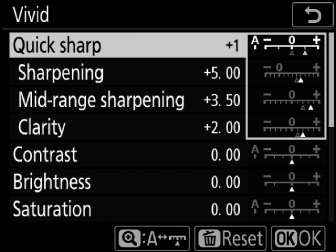
-
Press J to display [] options when settings are complete.
-
Default settings can be restored by pressing the O (Q) button.
-
-
Select a destination.
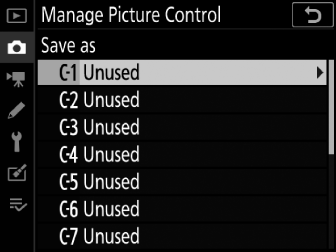
Choose a destination for the custom Picture Control (C-1 through C-9).
-
Name the Picture Control.
-
Pressing 2 when a destination is highlighted in the previous step displays the [] text-entry dialog.
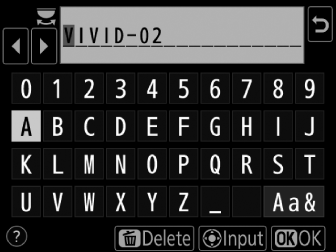
-
The default name, created by adding a two-digit number to the name of the existing Picture Control, appears in the text display area. The two-digit number is generated automatically by the camera.
-
Custom Picture Control names can be up to nineteen characters long.
-
For information on text entry, see “Text Entry” (Text Entry).
-
-
Press J.
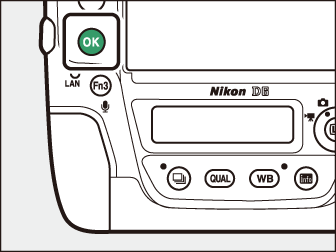
-
Text entry will end.
-
The new Picture Control will be added to the Picture Control list.
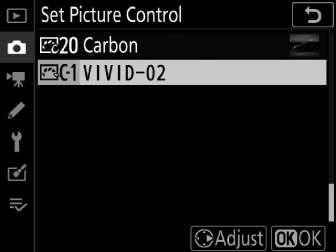
-
The original preset Picture Control on which the custom Picture Control is based is
indicated by an icon in the top right corner of the edit display.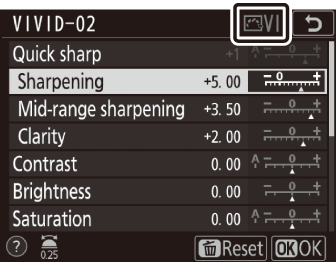
The options available with custom Picture Controls are the same as those on which the custom Picture Control was based.
The [] item in the [] menu can be used to copy custom Picture Controls from the camera to a memory card.
You can also delete custom Picture Controls or copy them from a memory card to the
camera. (The memory card must be inserted in Slot 1. Memory cards inserted in Slot
2 will not be detected.)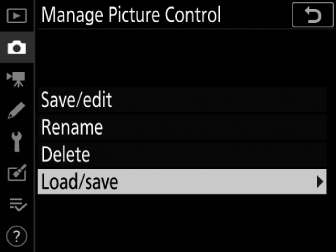
-
[]: Copy (import) custom Picture Controls from the memory card to the camera. When importing custom Picture Controls, you can choose the destination (C-1 through C-9) and name it as desired.
-
[]: Delete selected custom Picture Controls from the memory card.
-
[]: Copy (export) a custom Picture Control from the camera to a memory card. Highlight a destination (1 through 99) for the selected Picture Control and press J to export it to the memory card.

